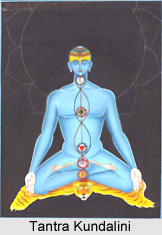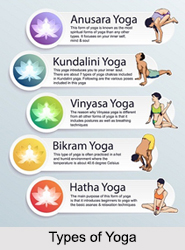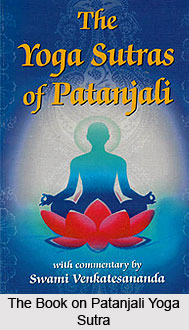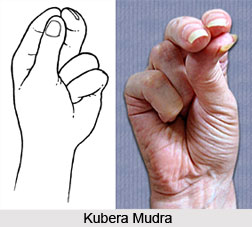 The claims made on behalf of hatha-yoga are as extensive as they are remarkable. Techniques like Asanas, Kumbhaka and Mudras are often accompanied by the claims of immense effects such as "immortality" and even attainment of Moksha. All these claims seem to be exaggeration as to how can particular postures of body lead us to such seemingly grand achievements. The answer lies in the fact that, techniques alone do not stand much if not allied with the holistic experience of Hatha yoga. However, if such claims are considered with regard to each techniques proper place in the discipline as a whole i.e. as concerning the technique`s effect in combination with a full range of asanas, Mudras, Kumbhaka and intense mental concentration then they become a little more feasible.
The claims made on behalf of hatha-yoga are as extensive as they are remarkable. Techniques like Asanas, Kumbhaka and Mudras are often accompanied by the claims of immense effects such as "immortality" and even attainment of Moksha. All these claims seem to be exaggeration as to how can particular postures of body lead us to such seemingly grand achievements. The answer lies in the fact that, techniques alone do not stand much if not allied with the holistic experience of Hatha yoga. However, if such claims are considered with regard to each techniques proper place in the discipline as a whole i.e. as concerning the technique`s effect in combination with a full range of asanas, Mudras, Kumbhaka and intense mental concentration then they become a little more feasible.
The display of effects of Hatha yoga has called in for several textual mentions, anecdotes and folklore. These effects are evident in several `special powers`, acquired by the yogi through prolonged and assiduous practice, and commonly termed siddhis. In yogic context the term Siddhi has two meanings. Firstly it denotes the `absolute success` or `perfection` achieved by the yogi who has realized his or her true identity as Brahman. Secondly it refers to the sense of a more physical, but comparatively minor `accomplishment` or `special power` acquired on the way to ultimate success. Such accomplishments were more visible, but they only indicated that the Sadhaka is moving in the right direction, rather than being the goals themselves.
According to the Yoga-Sutra, Siddhis attain the sustained practice of sanyama, which consists in the combined inner disciplines of Dharana, Dhyana and Samadhi. This is also defind in terms of vibhuti pada. Vibhuti meaning `signal blessing`, `gift` or `power` and thus is virtual synonym of siddhi. Much of the Vibhuti-pada is devoted to outlining the numerous siddhis accrued by one`s performing Sanyama on specific objects. Eight Siddhis are held to be most important amongst all.
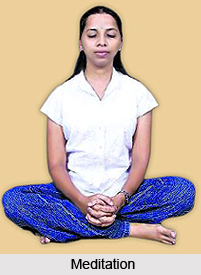 These eight, generally referred to as the Maha (`great` or `major`) Siddhis, with their literal meanings are as follows:
These eight, generally referred to as the Maha (`great` or `major`) Siddhis, with their literal meanings are as follows:
1. Animan - It is the ability to perceive the nature of an atom.
2. Laghiman - lightness of weight, implying the ability to levitate.
3. Mahiman - Its the ability to expand infinitely.
4. Prapti - The power to reach everywhere.
5. Prakamya - Freedom of will.
6. Vasitva - dominion over the universe.
7. lsitrtva - the power to create.
8. Kilmuvasayitva - The gift of wish fulfillment.
The Siva-Samhita on the other hand, enumerates different manifestation of nine alternative Siddhis, namely:
1. Vak-siddhi - perfection in speech, speaking the truth.
2. Kamachari - moving to where one desires, teleportation.
3. Duradrishti - far-seeing, clairvoyance.
4. Durashruti - far hearing, clairaudience.
5. Sukshma-drishti - subtle seeing, i.e. perceiving subtle phenomena.
6. Parakayapravesana - entering another`s body.
7. Vin-mutra-lepane svarnama-drsya-karana - turning objects to gold by smearing them with one`s feces and urine.
8. Bhavantyetani sarvani - becoming completely invisible.
9. Khechara - moving in space.
The fundamental basis of Hatha yoga consists of the fact that the maximization of physical health is but the necessary basis of the Self-realisation process. The body must be purified and strengthened to efficaciously `channel` powerful subtle forces (prana). Only a yogic body is able to withstand the powerful and transformative effects of Kundalini-Shakti. Unfortunately, many the people who are beginning to approach hatha-yoga, as a method of physical exercise and stress relief are largely uninterested in the more spiritual aspects of the discipline.





